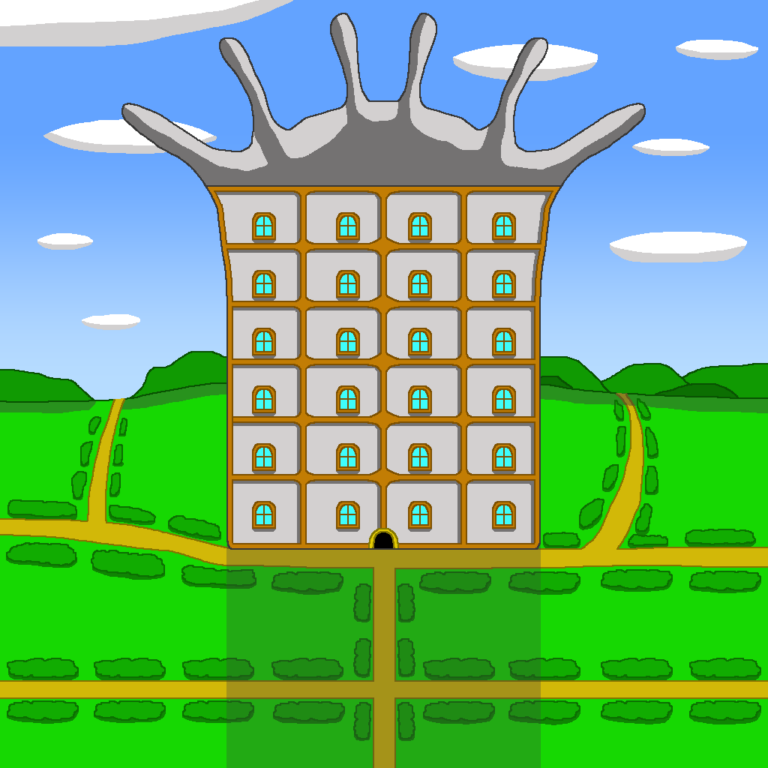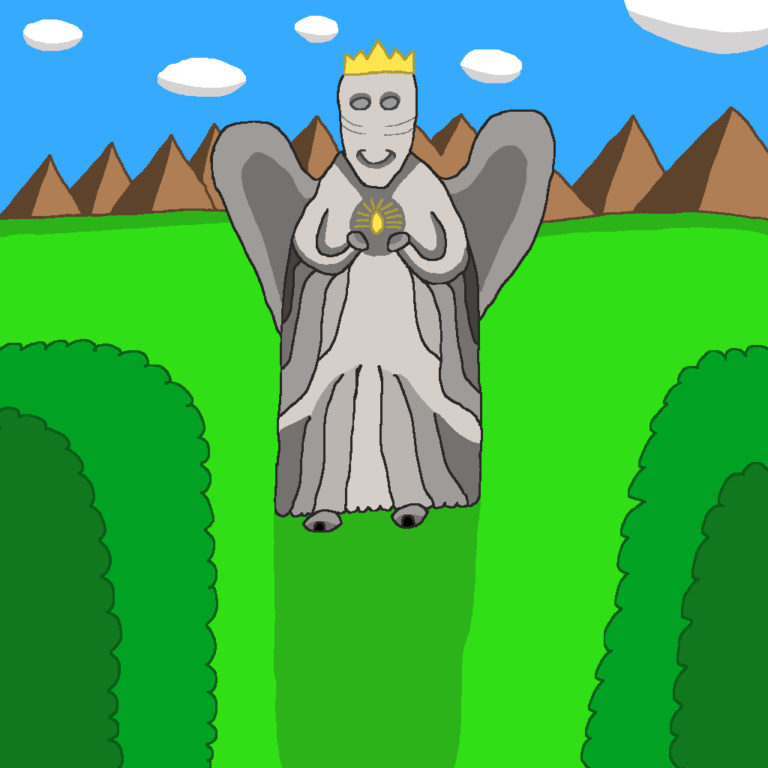Join US
Do you want to build the fantasy world you’ve always dreamed of?
Subscribe to receive notifications when a new post is out and for our monthly newsletter!
You can always unsubscribe anytime.


Power comes in many forms when it comes to governments in fantasy. Some rely on brute force to keep people in line. Others use the power of the purse to maintain order and to keep their citizens happy and content. Out of them all, there is one that uses religion to remain in power and it’s the fantasy theocracy.
The theocracy is considerably popular in the genre, which comes as no surprise as religion is a key component in fantasy. Indeed, many worlds are set in medieval times, a period where religion was dominant across many countries. Consequently, many wars broke out as different cultures and religions clashed with one another.
It takes inspiration from many real-world elements like the Catholic Church where the Vatican is the seat of power. Additionally, fantasy religions draw from different faiths like Christianity, Taoism, and many others but they do so in a way that matches the world they’re based in.
Depending on one’s point of view, the fantasy theocracy can be a source of great blessing or the culprit of all his problems. Religious folk are devout in their worship and work to ensure they remain on the good side of their deity, choosing to always do the right thing. On the other hand, it can cause all sorts of grief for people since even thinking a little differently can get someone branded a heretic and cast out of society unless he repents.
In worlds where religion plays a fundamental part in everyday life, the theocracy holds enormous influence. Religious leaders have the power to do great good or use it for sinister purposes and there’s nothing anyone can do about it.
This is the third entry in the fantasy governments series. Interested in reading some of our other articles? You can find them on our blog page.
Think of a theocracy as a pyramid. At its peak is the top priest, the one who’s considered the closest to the deity. It’s assumed that he is the instrument of the divine being’s will, delivering his commands to everyone else. Beneath him are powerful religious leaders who work to spread the top priest’s wishes far and wide. At the bottom is the stalwart faithful, the great number of everyday citizens who attend church, donate, and attend religious functions.
With the top priest considered godlike to his close relationship with the deity, he resides in the holiest of holy buildings, a grand palace befitting that of a king. It is from this place that he gives his sermons to the faithful, preside over important events like anointing new monarches, and consult with his advisers on crafting religious doctrine.
Other leaders of a fantasy theocracy dwell within churches or other places of worship though they aren’t as grand as the one where their leader lives. They orate from the altar, speaking to the devout and work to enforce the will of the theocracy on the mass populace.
Ever since they can remember, the faithful was taught to always obey the leaders of their faith and that their leaders can do no wrong. Moreover, they were trained to always put their religion’s interests ahead of theirs. Being ever obedient would lead them to their salvation and they would go to heaven after death.
Going against the theocracy was sacrilegious, a sin that couldn’t be wiped away. Small offenses let to minor punishments but grave ones like openly criticizing doctrine could lead to expulsion or at worse, death.
Priests and other leaders were encouraged to suffer no dissidents. They were invested with powers to punish them and they had no qualms about using them, especially if the institutions they held in high honor were at stake.

In religion-dominated worlds, you’re likely to see a theocracy of some kind. It could be a benevolent one, working to bring salvation to everyone in a world full of bloodshed and war. Alternatively, it could be an oppressive one who’s cruelly keeping people in line by feeding them lies and punishing those who tell the truth.
When working with one, think about what you want it to do. Is it a force for good or not? Is it working to make people’s lives better by giving them hope that things will work out in the end? Do people feel like they’re doomed to spend an eternity in damnation despite doing the right thing their whole lives because their leaders preach nothing but lies?
Next think about the positions within the fantasy theocracy. You can use real-world examples like a pope or cardinals and bishops or you can make your own. Some fantasy worlds use the former whereas others utilize the latter. If you opt for your own, you can come up with fun and creative names!
What about religious buildings? There’s nothing wrong with using old-fashioned ones like churches or temples. They’re classic for a reason and your audience understands what their purposes are. Should you decide to craft unique names, be sure to explain them and how they work in a way that your audience understands. The goal here is to make people immersed in the world you created.
What is the faithful’s relationship with their leaders? This is an important point because the relationship dynamic between the two can be a major driving force in both the world and the story. It conveys how everyday people perceive the theocracy which gives your audience valuable insight into how things are really going in the country.
How much power does the theocracy hold in a country? Is it effectively the functioning government or a different entity competing for control over the populace? This is another vital point to consider since it can hold a plethora of powers both officially and unofficially and exercise them in different ways. It can be a major ally to the people in charge or it can be the leader of the opposition, especially if religious leaders believe the government poses a threat to the nation.
With religion a cornerstone of fantasy, it isn’t surprising that there’s faiths largely inspired from the real-world appearing in many tales. As to the extent that religion appears, well that’s another question. The same applies to the fantasy theocracy.
Realistically speaking, the theocracy only appears in stories where religion is one of the most dominant themes. If it is evil, that is it’s an antagonist, it can be used to showcase how mankind twists the special relationship between the deity and the faithful to control people and leave them with no way out.
A malevolent theocracy preaches the lie that every single person in the country exists to do their deity’s bidding and refusing to comply leads to reprisals. It uses fear and intimidation to keep people in line. The protagonist unravels the truth behind it, coming to the realization that it’s nothing but a sinister organization hellbent on maintaining its iron grip on its people and vanquishing it will free them all.
While there are stories where the fantasy theocracy is evil, there are others where it’s presented as a positive force, a shining beacon of hope. Knowing that the world is trapped in an eternal war between good and evil, it preaches fidelity to the light and works to stymie the spreading darkness. Priests and pastors give uplifting sermons to the faithful, telling them to always keep the light in their hearts and not let evil in at all.
To combat the enemy, the theocracy works in tandem with the protagonist whether he knows it or not. It exorcises demons believed to be doing evil’s bidding that infiltrated the bodies of innocent souls. Holy instruments capable of dealing devastating damage to the servants of darkness are deployed in skirmishes. Weapons blessed by the divinity are used to smite demons and other foul creatures.
A fantasy theocracy brings things to the table that no other government does. Firstly, it’s completely based on religion and uses its divine-blessed powers in both benevolent and sinister ways. Secondly, it can dominate the mass populace in a way no other can, even going so far to have everything they do be done in the deity’s name.
The power hierarchy of a theocracy resembles that of a pyramid. Power flows downward from the head of the theocracy, all the way down to the faithful. The latter has little to none whereas the former’s are absolute and he’s not afraid about using them.
In regard to worldbuilding, it can be part of your world if religion plays a great role in many people’s lives. Whether it’s actually running a country or is just one of several power centers is entirely up to you. You want it to feel natural, like it fits right in, even if it’s an evil force.
With the story, don’t just look at the big picture. Show how ordinary people interact with it and this also includes the protagonist. Does the hero believe it’s a champion for the people or does he think it has ulterior, sinister motives behind their actions? There are a myriad of ways you can craft compelling tales with a fantasy theocracy.
Many worlds in fantasy feature religion in some capacity. Does this mean you should have a theocracy? Only you can answer that question. Should you choose to do so, it gives you opportunities to tell stories that you couldn’t otherwise, which is always a plus!
There’s only one question you have to ask yourself: will you create a fantasy theocracy that helps make your world stand out from all the others out there?
Let me know what you think in the comments below. (Note: this is an account-exclusive feature).
If you don’t have one, you can register here. It only takes a few moments of your time!
Liked this article and want to subscribe? All you have to do is fill out the form below and that’s it!
Thanks for reading this and until the next time,
Sunfire
Subscribing means you receive:
You can always unsubscribe anytime.
Do you want to build the fantasy world you’ve always dreamed of?
Subscribe to receive notifications when a new post is out and for our monthly newsletter!
You can always unsubscribe anytime.